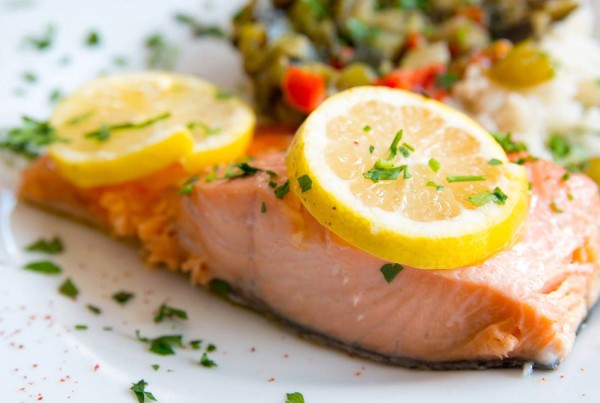
New study shows the importance of fat-burning during high-intensity training.
Through the years, it’s been difficult for many people to understand the role of fat as a fuel. We live in a sugary world where glucose is understood to be the only source of energy, as if fat were non-existent. We learn it in high-school biology class. It is written in exercise physiology textbooks, and of course, in sports magazines. We see it on websites and particularly in advertisements — sugar is our primary fuel.
Of course, it’s not true.
One could easily make the argument that fat is actually the body’s primary fuel since it provides long-term energy, and that glucose is secondary because it’s limited to a few minutes of fuel. The fact remains that we use both at all times. Whether we’re sleeping, sitting at our desks, warming up for a workout and even during a high-intensity interval session or race—we burn fat along with sugar (glucose).
A new study* adds a previously missing link to the fat-burning discussion. Researchers in Norway and New Zealand were able to measure fat-burning during high-intensity interval training. They showed for the first time that fat-burning, along with glucose, not only occurs during high-intensity efforts, but that the greater capacity to perform anaerobic work is mostly explained by higher fat-burning.
The notion that more energy from fat equals better performance has been a key part of my program of Maximum Aerobic Function (MAF) since the 1970s. I have shown improvements in MAF Tests, clinical research showing aerobic base building leads to very successful race performance, even before anaerobic training is added, and a diet higher in fat and lower in natural carbohydrates (void of junk food but adequate healthy protein) directly affects fat-burning. This also corresponds to a lower respiratory quotient — meaning those athletes who eat well and develop their aerobic systems burn more body fat both at rest and during sub-max testing. The new study adds a missing component in that they showed those burning more fat had a greater capacity for high-intensity training.
We can measure fat-burning in an exercise physiology lab quite accurately with a device called a gas analyzer. As part of a treadmill test, users breathe into a face mask with connected tubes enabling the measurement of oxygen and carbon dioxide from which a percentage of fat- and sugar-burning can be determined. Most athletes, including those who work out to keep in shape, don’t perform these tests due to cost and convenience, so testing like this is typically conducted during exercise research. Athletes who are tested must be evaluated with regularity so they know that fat-burning (and other parameters) are improving over time.
However, it’s not necessary, nor practical, for everyone to go through such a rigorous testing process. That’s because it’s usually somewhat obvious when the body is a poor fat burner — in most cases, the body stores too much fat. There are other indications too. Even if we can’t come up with a specific number for exactly how much fat and sugar we’re burning during a workout, like during a treadmill test, most of us can easily know if we’re burning a sufficient amount of fat for fuel or not. An inventory of clues — common signs and symptoms listed here with more details about them through this website — can help inform us of our fat-burning abilities. This important inventory of body function is similar to other questions clinicians often ask patients to quite accurately understand their health and fitness status (this also correlates well with other high-tech tests). Having one or two of the clues listed below may mean there’s room for improving your fat burning — this in addition to the first question of whether your body is storing too much body fat:
- Consumption of refined carbohydrates.
- Body fat above normal/healthy.
- Frequent fatigue.
- Blood-sugar irregularity (too low and or high).
- Frequent hunger.
- Risk for chronic disease such as diabetes (or pre-diabetes), high blood fats, hypertension, or
- family history of these conditions.
- Race performance plateau.
- MAF Test or other sub-max performance evaluations not improving or worsening.
With more fat-burning during competition, there is also less of a need to consume carbohydrate during long races. One could cut nutrient needs in half or greater just by relying more on fat stores. Having to eat less during competition takes a big burden off the gut, a significant source of stress for many athletes.
So, how can you improve fat-burning and reduce your reliance on sugar? The answer to this is somewhat individualized as metabolic, nutritional, hormonal and other bodily components play key roles. However, here are the two most common requirements I have seen in those who need to improve fat-burning:
- Eliminate refined carbohydrates during meals and snacks (they’re fine during long training and racing but only when necessary). It is particularly important to avoid high carb intake before working out because this can impair fat-burning. Just this recommendation alone can quickly shift the body’s metabolism to increased fat burning — within 24 hours — especially if reduced carbohydrates are replaced by healthy dietary fats, which can also increase fat-burning.
- Train the slow-twitch aerobic muscle fibers, which contain mitochondria that burn fat. The ongoing “no-pain, no-gain” trend has taught us to work out hard, so we often don’t train those slow moving muscles. The real goal is to make the slow-twitch muscles move faster — this happens over time with the right training and food choices that improve fat-burning.
Burning both fat and sugar is how human energy systems evolved. Relying on sugar without adequate fat-burning often leads to compromised fitness and reduced health.
The world is getting fatter. That’s no surprise. However, what is surprising is that regularly working out no longer means being lean. Too many marathoners, triathletes, steadfast gym visitors, aerobic dancers, walkers, and other exercise enthusiasts are counting the wrong calories, gulping glucose drinks, eating low-fat, and training hard, only to find themselves in the growing ranks of the overfat.
For those with too much body fat, health issues, or whose fitness is waning, it’s time to rethink the carbohydrate myth and embrace fat for fuel.
*Ken J Hetlelid, Daniel J Plews, Eva Herold, Paul B Laursen, Stephen Seiler. Rethinking the role of fat oxidation: substrate utilisation during high-intensity interval training in well-trained and recreationally trained runners.” BMJ Open Sport Exerc Med, 2015.








